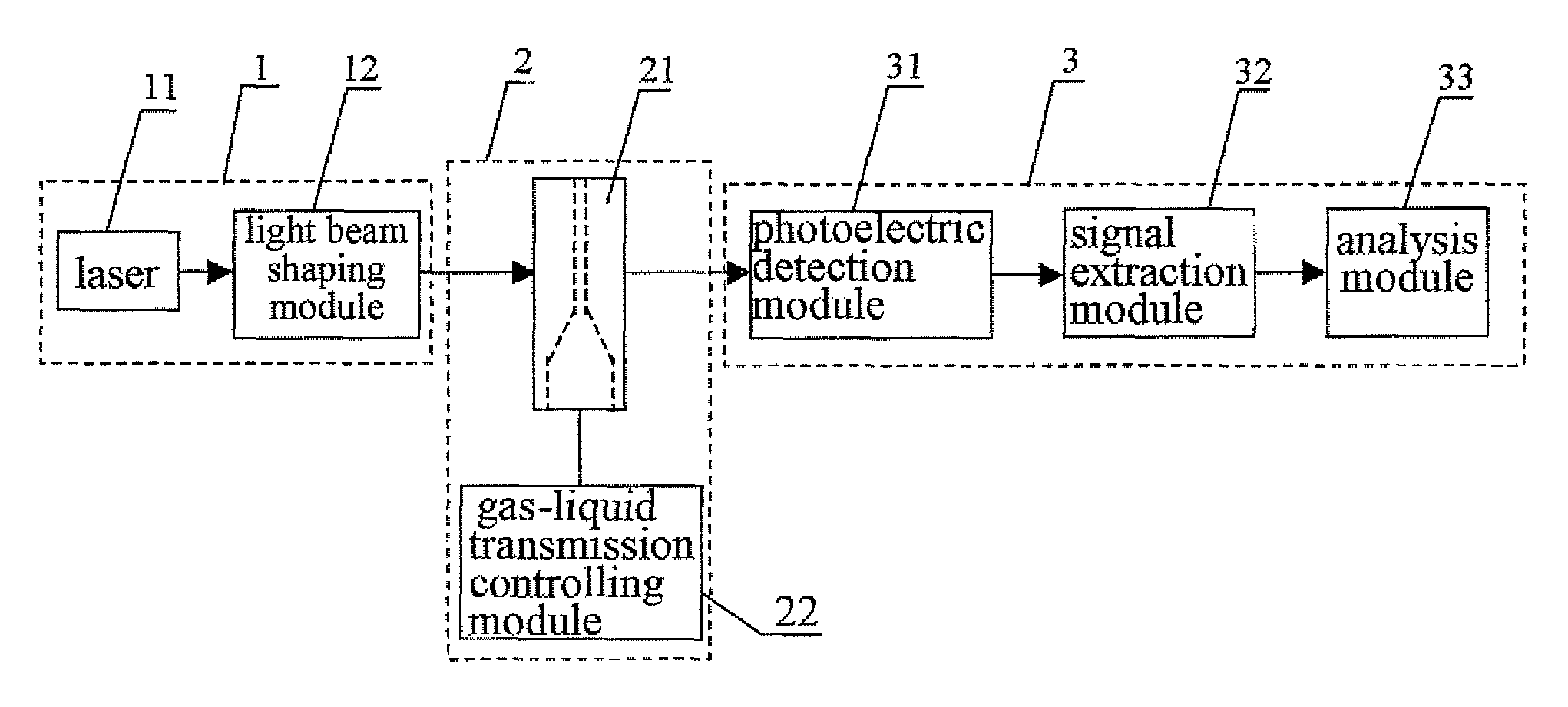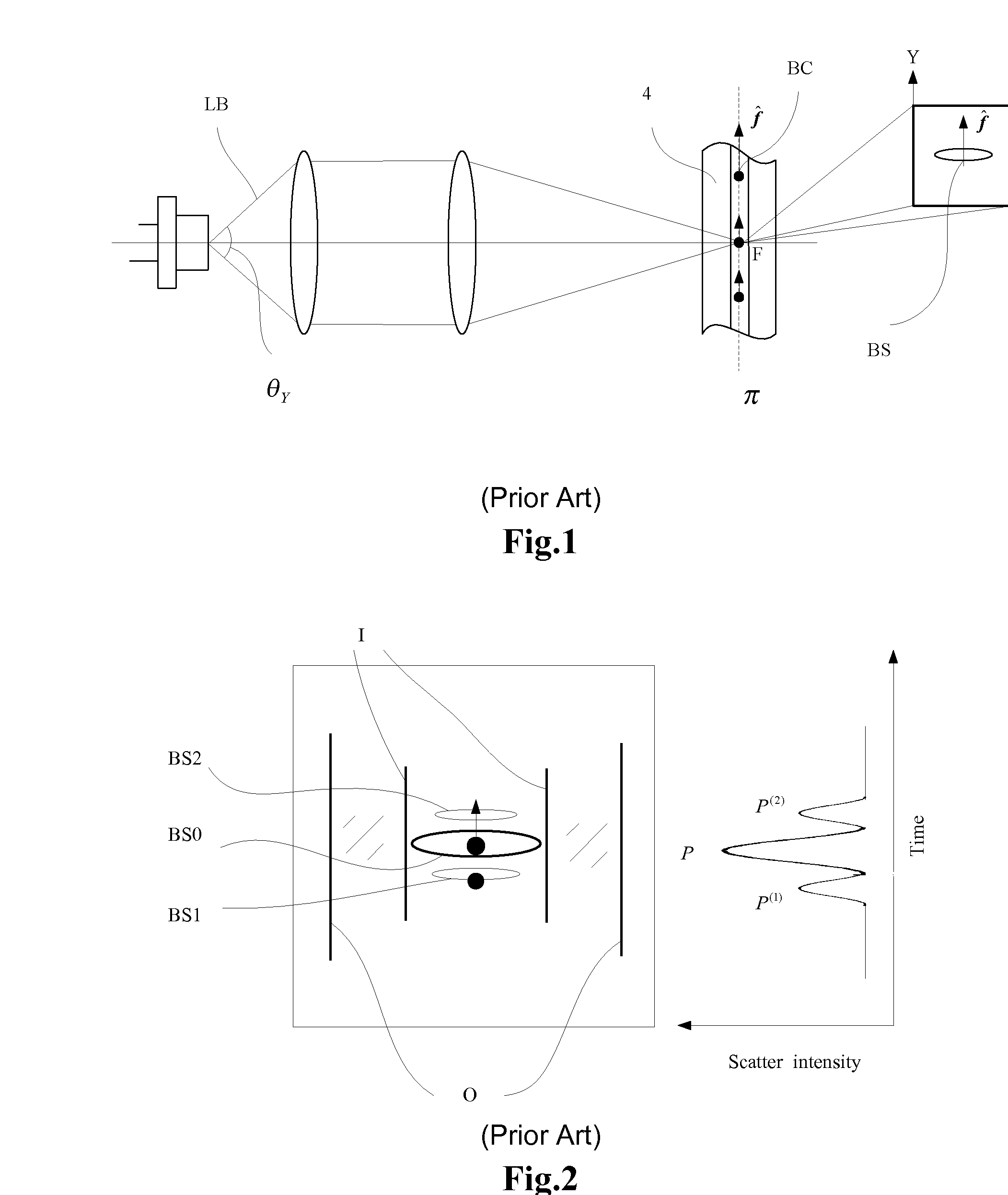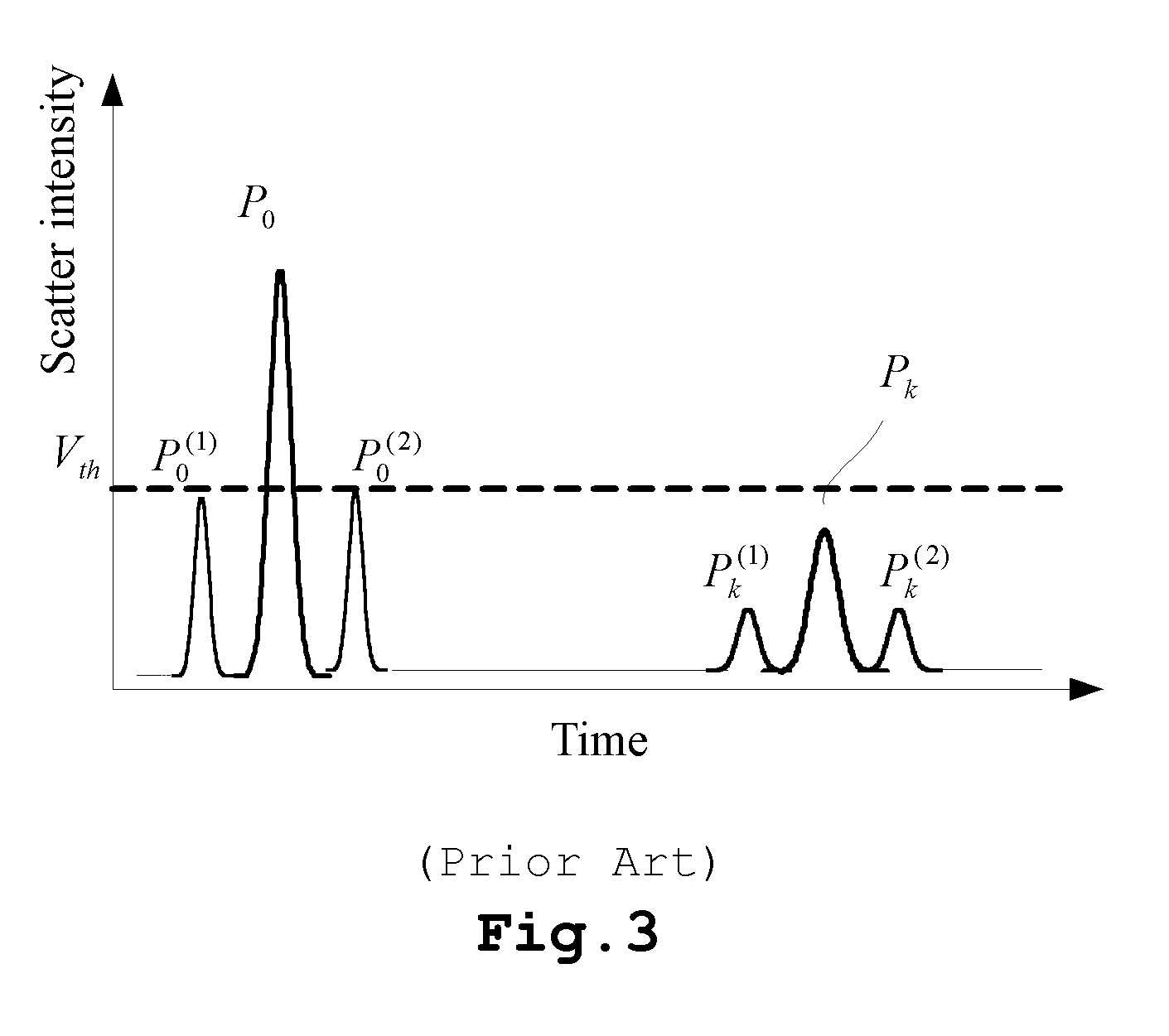Flow cytometer
a flow cytometer and flow cytometer technology, applied in the field of flow cytometers, can solve the problems of weakening the photoelectrically detected signal, affecting the accuracy of counting and classification, and dispersing goes against the stability of signal detection and high-speed cell-interrogation, so as to enhance the stability of optical signals
- Summary
- Abstract
- Description
- Claims
- Application Information
AI Technical Summary
Benefits of technology
Problems solved by technology
Method used
Image
Examples
example 1
[0046]As shown in FIG. 4, the flow cytometer according to the present embodiment comprises an illuminating unit 1, a sample generation unit 2 and a signal processing unit 3 which are connected in series.
[0047]The illuminating unit 1 comprises a light source and a light beam shaping module 12. The light source is typically a laser 11 such as a gas laser or solid laser, and preferably, a semiconductor laser in the present embodiment, which significantly reduces the structural dimension of the whole system. As shown in FIG. 5, the light beam LB emitted by the semiconductor laser has different divergence angles in two directions. Assuming that the light is transmitted along Z axis, the light beam divergence angle θx in the X direction does not equal to the divergence angle θy in the Y direction. If θx11 in the two directions perpendicular to each other are 30° and 18° respectively, with a maximum output power of 10 mW, operating power of 5 mW and wavelength of 670 nm.
[0048]The light bea...
example 2
[0056]The second embodiment is a further improvement over the first one. To focus the Gauss light beam emitted by the semiconductor laser 11 and having a relatively large angle of divergence onto the interrogation zone of the flow chamber 21, the collimating lens 121 in the light beam shaping module 12 is an aspheric collimating lens with a large numerical aperture, the magnitude of which is at least 0.3. As shown in FIG. 10, the numerical aperture of the single collimating lens 121, which takes the form of an aspheric lens, preferably is about 0.3-0.5, and the shape of its lens surface is defined by the following formula:
[0057]z=cr21+1-(1+k)c2r2+α1r2+α2r4,
wherein, c is the curvature, z is the axial distance of the cross-section from the fixed point, k is a quadratic constant, and r is the radius of the cross-section.
[0058]In addition, the light beam shaping module 12 may comprise more than one aspheric collimating lens 121 with a numerical aperture no less than 0.3.
[0059]As sho...
example 3
[0063]The third embodiment is a further improvement over the first and second embodiments. In the present embodiment, as shown in FIG. 12, the photoelectric detection module 31 comprises two sets of photoelectric signal collecting sub-modules and corresponding photoelectric converters 316A 316B. These two sets of photoelectric signal collecting sub-modules respectively collect optical signals with different scattering angles, and the photoelectric converters perform corresponding photoelectric conversion for the optical signals. In particular, the photoelectric detection module 31 comprises a collimating lens 311, a light-splitting prism 312, annular diaphragms 313A, 313B, condensers 314A, 314B, pinhole diaphragms 315A, 315B and photoelectric converters 316A, 316B.
[0064]The photoelectric signal collecting sub-module is accordingly comprised of the annular diaphragms 313A, 313B and the condensers 314A, 314B, wherein the clear apertures of the annular diaphragms 313A and 313B are uneq...
PUM
| Property | Measurement | Unit |
|---|---|---|
| width | aaaaa | aaaaa |
| side length | aaaaa | aaaaa |
| thickness k0 | aaaaa | aaaaa |
Abstract
Description
Claims
Application Information
 Login to View More
Login to View More - R&D
- Intellectual Property
- Life Sciences
- Materials
- Tech Scout
- Unparalleled Data Quality
- Higher Quality Content
- 60% Fewer Hallucinations
Browse by: Latest US Patents, China's latest patents, Technical Efficacy Thesaurus, Application Domain, Technology Topic, Popular Technical Reports.
© 2025 PatSnap. All rights reserved.Legal|Privacy policy|Modern Slavery Act Transparency Statement|Sitemap|About US| Contact US: help@patsnap.com



